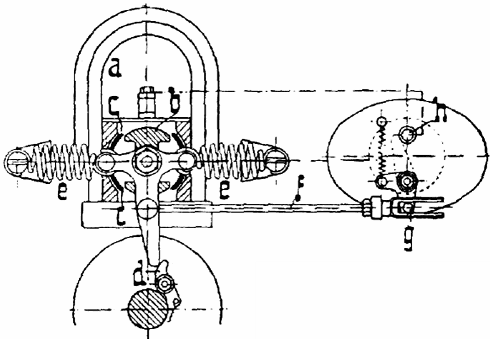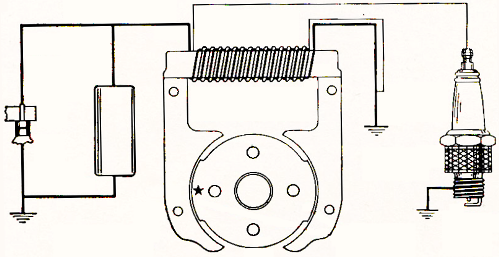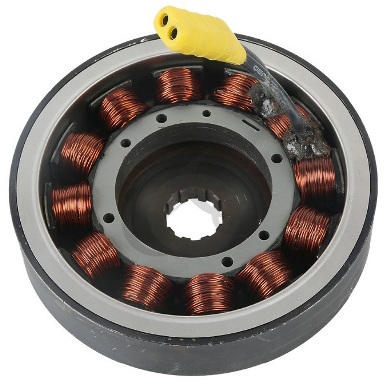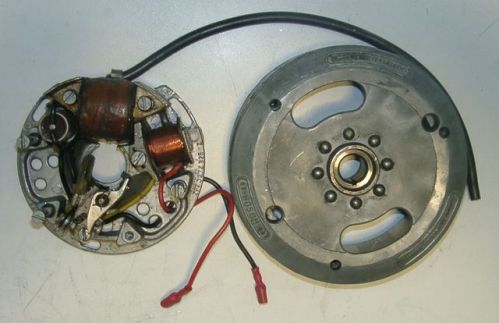Magneto — device and principle of action
In 1887, the German engineer and inventor Robert Bosch, owner of the company of the same name, developed and patented the first magnetic ignition system. It all started when one of the company's customers ordered the development of an ignition system for their gas engine, and soon the order was fulfilled. Later some flaws were discovered and the device was modified. As a result, by 1890, Robert Bosch GmbH was already fulfilling large orders for magnetic ignition systems, which began to arrive in huge quantities from all over.
Seven years later, in 1897, the device was eventually adapted for a vehicle, as Daimler needed to develop an ignition for the De Dion Bouton tricycle. Thus, the problem of ignition for automobile internal combustion engines operating at high revolutions was finally solved. Five years later, in 1902, a student of Robert Bosch, Gottlob Honnold, improved the magneto ignition by adding a spark plug and thus made the device universal.

So what is a magneto? How does it work and how does it work? Everything is very simple, like everything ingenious. Magneto is an alternator in which the role of an inductor is played permanent magnetdriven into rotation by an external force. The magnetic rotor creates a rotating alternating magnetic flux that induces an EMF in the stator winding.
A typical automotive ignition system magneto contains low and high voltage coils. The low voltage coil has a breaker and a capacitor in its circuit, and the high voltage coil is connected to ground on one of its terminals and to the spark plugs on its other terminal.
The common U-shaped yoke on which the coils are wound is a magnetic circuit in which alternating magnetic field by rotating a permanent magnet. Often, part of the turns of the high-voltage winding are used as low-voltage windings, similar to how the windings of autotransformers are made.

As the magnet rotates, an EMF is induced in the low-voltage coil, but the coil is short-circuited by a mechanical switch so that it experiences an induced current caused by the changing magnetic flux penetrating the core as the magnet crosses it with its force lines. The change in magnetic flux lasts a few milliseconds and as a result there is a self-closing coil with a current of several amperes.
At some point, the breaker contacts open, the current rushes from the coil to the capacitor, and harmonic oscillations begin in the resulting low-voltage oscillating circuit, their frequency is about 1 kHz.Because the contacts open quickly, for less than a quarter of the first loop oscillation period, there is no break between the breaker contacts and only after the breaker contacts open does the EMF in the low voltage circuit reach amplitude.
At this moment, the spark plug connected to the high-voltage winding occurs, the energy of the capacitor of the low-voltage circuit is converted into alternating current energy of the high-voltage circuit, as the oscillations in the low-voltage circuit continue, and the combustible mixture in the cylinder has time to ignite.
Oscillations last no more than 1 millisecond, due to the inductance and capacitance values of the magnetic structure, then the breaker contacts close again and the next cycle of current rise begins in the low-voltage circuit moved by itself.
Thus, we see that the magneto is a magnetoelectric machine whose function is to convert the mechanical energy of rotation of the magnetic rotor into electrical energy, specifically the energy of a high-voltage discharge on a candle. Today, you can still find magneto-based ignition systems for internal combustion engines.

Obviously, not every generator can be attributed to a magneto, since only those generators that are excited by permanent magnets and are usually connected to a high-voltage transformer of the ignition system of internal combustion engines are called magneto.
It happens that the magneto provides not only the ignition, but also the power supply of the vehicle's on-board network, but most often the magneto supplies only the ignition system.Meanwhile, today on the market you can find permanent magnet generators with several generator coils on the stator, such generators are suitable for motorcycles, but in principle they are universal.
In some cases, an additional coil located on the magnetic core still serves to generate electricity for the on-board network. Magnets are sometimes located on the flywheel, which has the dual function of actuating the magnet and activating the alternator. Such a hybrid device is actually called «magdino» from a combination of the words «magneto» and «dynamo».
On light motorcycles, jets, snowmobiles, outboards, outboards, you can find Magdinos working together with rectifiers and voltage regulators. The power of the magdino is not great, within 100 watts, but it is quite enough for side lighting and even for charging the battery. The advantage of Magdino is its small size and low weight.

In internal combustion gasoline engines, a magneto was traditionally used for a long time, providing a current pulse to the spark plug, when batteries were not yet widely introduced for this purpose. Even today such solutions can be found. Two-stroke or four-stroke engines from mopeds, lawnmowers, chainsaws. In World War II, German tank carbureted engines had a magnetic ignition system.
Reciprocating aircraft engines have a pair of spark plugs on each cylinder, and each set of spark plugs is connected to its own magnet—the left and right sets of spark plugs are powered separately. This solution allows more efficient combustion of the fuel mixture, and in case of failure of one of the pair of magnets, the second one remains in operation, which adds reliability to the system.
